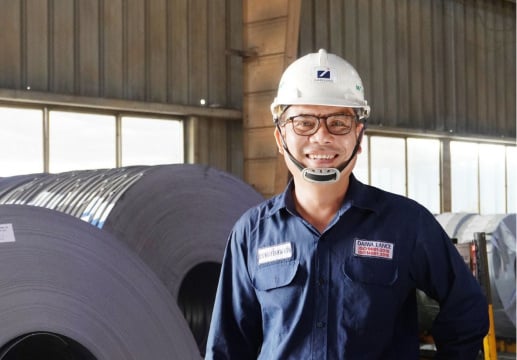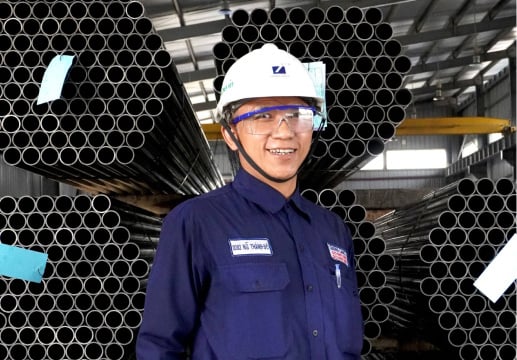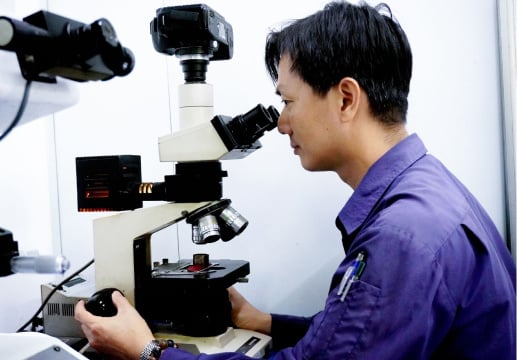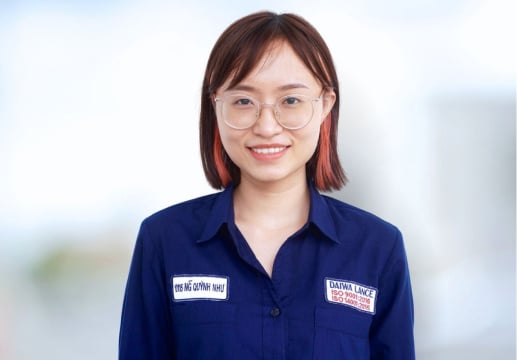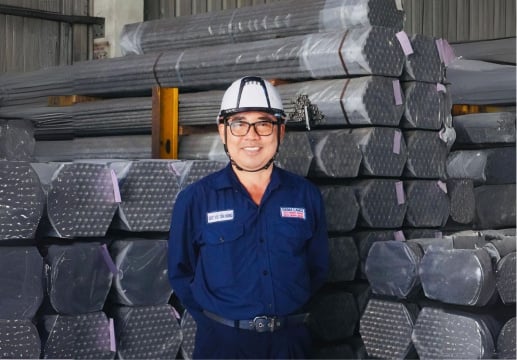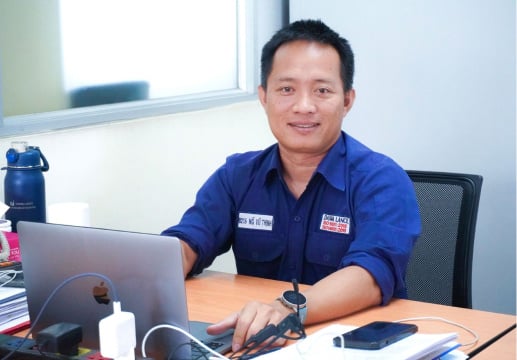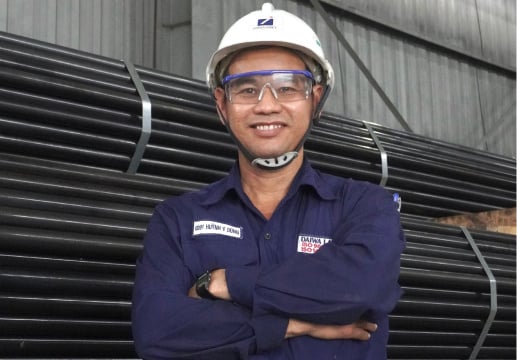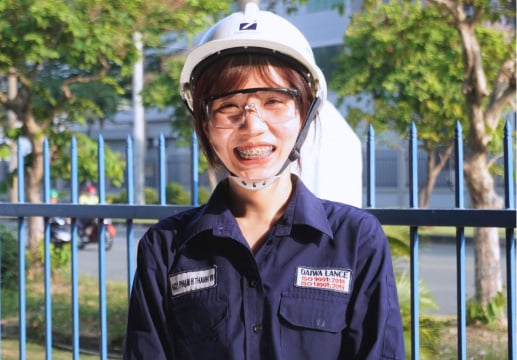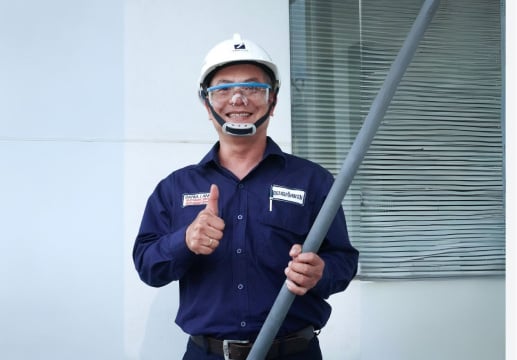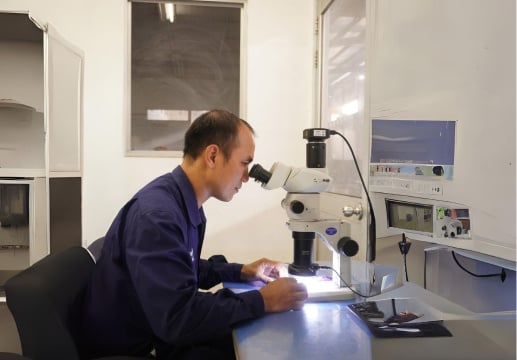Thermal lances have long been indispensable tools for heavy-duty cutting and piercing applications, capable of generating intense heat to cut through challenging materials like thick steel, concrete, and refractory bricks. This article will explore the concept of Daiwa Rolled Thermic Lance, examining its design and the operational differences it presents compared to conventional thermic lances.

What is Daiwa Rolled Thermic Lance? An Evolution in Design
Traditional Thermic Lance: Characteristics and Operational Considerations
In industrial environments such as demolition sites or metal fabrication facilities, an operator typically uses a traditional thermic lance while wearing substantial protective gear designed to mitigate the extreme heat and sparks generated. The operator directs the ignited tip of the lance towards the material to be cut, such as a large metal section or a thick concrete structure. The process generates a significant shower of sparks and molten material as the lance consumes itself to perform the cut.

A key characteristic of traditional lances is their finite length. As the cutting process proceeds, the lance material is consumed, causing the length of the working tool to diminish. Consequently, the operator must periodically interrupt the cutting operation to replace a spent lance section with a new one. This interruption requires halting the cut, securing a fresh lance, and re-establishing the cutting point. For extensive or complex cutting tasks, these frequent interruptions can affect overall operational continuity and may contribute to operator fatigue due to the repetitive nature of the process and the need for precise repositioning.
In contrast, Daiwa Rolled Thermic Lance introduces a different operational approach.
Daiwa Rolled Thermic Lance: A Flexible and Continuous Feed System
Daiwa Rolled Thermic Lance represents a departure from the rigid, finite-length design. Instead of individual rods, the lance material is supplied as a continuous, flexible length, stored in a coiled format. This design offers distinct operational characteristics.

When an operator transitions from a traditional rigid lance to a coiled, flexible thermic lance, the primary perceived difference often relates to maneuverability and reach. The ability to utilize a continuous length of lance material can reduce the need for frequent interruptions that are common with traditional lances. This continuous feeding capability is intended to enhance the flow of work, particularly for longer cuts or when accessing material in challenging or remote locations. The design aims to provide extended reach and greater operational freedom compared to systems reliant on discrete, rigid lance sections. The concept of "continuous feed" is central to its operational model, designed to facilitate a "sharp cut without interruption.
RELATED POST
Operational System Design and Perceived Advantages of Daiwa Rolled Thermic Lance
The implementation of Daiwa Rolled Thermic Lance system involves specialized equipment designed to manage and deploy the flexible lance material.
System Description: Components and Functionality
A typical Daiwa Rolled Thermic Lance system centers around a dedicated feeding and dispensing unit. This unit is engineered to handle a long, flexible material that constitutes Thermic Lance.

- The Coiled Thermic Lance Material: The lance material in this system is distinct from conventional rigid lances. It is supplied as a continuous, flexible, and durable hose-like material, which is compactly stored on a large spool or reel integrated into the dispensing unit. This coiled configuration allows for the storage and deployment of extended lengths of lance material from a single, often mobile, unit. The flexibility of the material suggests that the combustible elements and oxygen pathways are encased within a robust yet pliable outer casing, allowing it to bend and coil without compromising its structural integrity or cutting effectiveness.
- The Feeding and Guiding Mechanism: Integrated into the dispensing unit is a series of rollers. These rollers are designed to straighten and guide the flexible thermic lance material as it unwinds from the spool and is fed towards the operator. This mechanism aims to ensure consistent material delivery and minimize the potential for kinks or jams during operation. The unit's frame provides structural support for these components, and its mobility features (e.g., wheels) facilitate movement across industrial environments.
- The Operator Interface and Supply: The operator handles the active end of the coiled thermic lance, which terminates in a specialized nozzle or cutting head. This head is where the ignition and cutting process occurs, designed to withstand extreme temperatures and direct molten material effectively. An attached hose typically supplies the oxygen necessary for the thermic reaction.
Operational Advantages of Daiwa Rolled Thermic Lance
The operational advantages associated with Daiwa Rolled Thermic Lance system are primarily linked to its continuous feed capability:

- Continuous Cutting: A primary benefit is the capacity to perform extended cuts without requiring multiple interruptions for lance replacement. For large-scale demolition, material piercing, or long linear cuts, this continuous operation can lead to increased productivity.
- Extended Reach and Maneuverability: The inherent flexibility and extended length of the lance material can allow operators to access distant or awkwardly positioned targets with potentially less need to reposition heavy equipment or oxygen supply tanks. This aims to provide greater freedom of movement in complex work areas.
- Safety Considerations: By enabling the operator to maintain a greater standoff distance from the immediate cutting point, the system may contribute to improved operator safety by reducing direct exposure to intense heat, sparks, and molten material. The bulk of the combustible material remains contained within the system on the machine, with only the active cutting tip exposed.
- Efficiency: Reduced downtime associated with lance replacement, combined with extended reach, can contribute to more efficient operations and potentially shorter project completion times.
In summary, Daiwa Rolled Thermic Lance system represents a modern approach to thermal cutting, utilizing a continuous feed design to offer extended operational periods and increased flexibility.
Operational Overview of Daiwa Rolled Thermic Lance
To illustrate the operational sequence, please watch the following general process through the video below.
The operator positions themselves next to Daiwa Rolled Thermic Lance feeding unit, which often features a control panel or remote. A long, coiled length of lance material is loaded into the machine from its spool. As the operator initiates the process, the machine's internal mechanisms, including the rollers, begin to feed the flexible lance material forward.
The operator guides the emerging material, ensuring it moves smoothly towards the designated cutting point. Throughout the operation, the operator monitors the material as it passes through the machine, assessing the consistency of its feed and the cutting action at the tip. Control over the feed rate is typically managed via the control panel or remote.
Upon completion of the desired cut or at the end of the operational sequence, the operator stops the machine, ceasing the material feed. The processed material, or the remaining length of the lance, can then be inspected or prepared for the next operation. This workflow emphasizes a continuous rather than batch-oriented process, aiming for sustained cutting activity.
Conclusion
The development of Daiwa Rolled Thermic Lance introduces a distinct approach to thermal cutting, moving towards a system that emphasizes continuous operation and extended reach. By addressing some of the operational characteristics of traditional fixed-length lances, this technology aims to provide an alternative for applications demanding sustained cutting performance and enhanced maneuverability.
We aim to continue providing information on advancements and specialized lances in industrial applications in the upcoming blogs. If you're interested in diving deeper into relevant technologies, follow our blog for future discussions and insights.
- Category:
- Daiwa Lance Products
- Keyword:
- introduction to thermic lance








